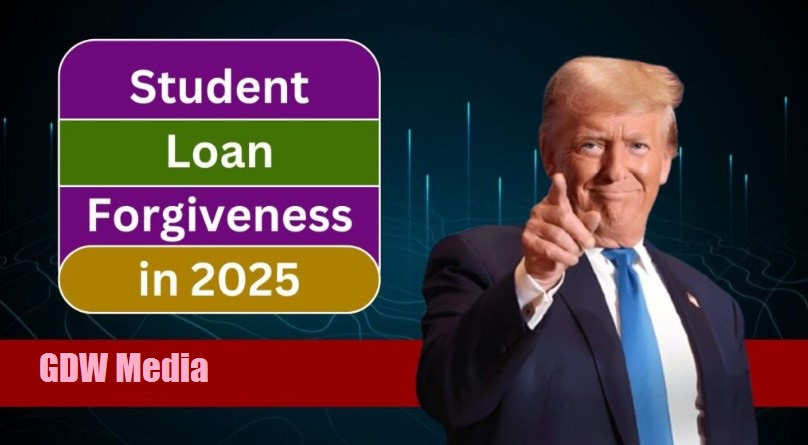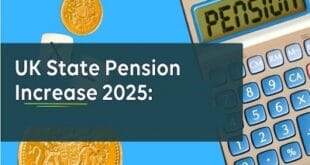
As of July 2025, the landscape of student loan forgiveness in the U.S. is undergoing seismic shifts under the Trump administration. With 42.5 million Americans holding $1.6 trillion in federal student loan debt, proposed changes to the Public Service Loan Forgiveness (PSLF) program and the elimination of Biden-era repayment plans like SAVE are sparking alarm among borrowers. A new Senate bill, passed on July 2, 2025, introduces a Repayment Assistance Plan (RAP) and limits borrowing, while an executive order targets PSLF eligibility for certain nonprofits. This comprehensive guide unpacks the changes, their impact on borrowers, and practical steps to manage your loans in this uncertain time. Stay informed and take control of your financial future.
What’s Changing with Student Loan Forgiveness?
The Trump administration’s overhaul of student loan programs, announced in March 2025 and advanced through a Senate reconciliation bill, targets both forgiveness and repayment structures. The Public Service Loan Forgiveness (PSLF) program, established in 2007 to forgive loans for government and nonprofit workers after 10 years of payments, faces new restrictions. The administration’s executive order, signed in March 2025, aims to disqualify organizations engaged in “illegal activities” such as supporting immigration advocacy or gender-affirming care from PSLF eligibility. This vague definition has raised fears of politically motivated enforcement, with advocates like Betsy Mayotte questioning the Department of Education’s (ED) legal authority to exclude employers. USA Today reported that negotiations on these changes failed to reach consensus, leaving the final rules pending public comment.
Meanwhile, the Senate’s “big, beautiful bill” eliminates popular income-driven repayment (IDR) plans like Biden’s SAVE, replacing them with two options for new borrowers after July 1, 2026: a Standard Repayment Plan (10–25 years based on loan size) or the Repayment Assistance Plan (RAP), which ties payments to income but extends forgiveness to 30 years. Borrowers with existing loans can keep their 20–25-year forgiveness timelines, but nearly 9 million are behind on payments, with 4.2 million at risk of default, according to the ED. The bill also caps undergraduate borrowing at $50,000 and graduate loans at $100,000–$200,000, ending the Graduate PLUS program. Forbes estimates RAP will increase annual payments by $2,928 for the average borrower compared to SAVE.
Why These Changes Matter
The proposed PSLF restrictions threaten the financial plans of millions, particularly teachers, firefighters, and nonprofit workers who rely on the program. For example, Tracey Blake, a Maryland researcher with $240,000 in combined debt with her husband, told USA Today she’s “terrified” her employer may lose PSLF eligibility just two years from forgiveness. The changes could also deter people from public service careers, exacerbating shortages in critical fields. On X, borrowers express frustration, with one user warning that “politics will decide who qualifies” for PSLF, reflecting widespread distrust.
The shift to RAP and the end of SAVE, which offered $0 payments for low-income borrowers, mean higher monthly payments for many. The Student Debt Crisis Center warns of a “mass wave of defaults” if the bill is signed, as borrowers face payments up to $5,000 higher annually. The ED’s restructuring, including mass layoffs and a failed attempt to transfer loan management to the Treasury or Small Business Administration (blocked by a federal judge), adds to the chaos. With delinquency rates spiking in 2025, experts like Alex Beene caution that reduced customer service and limited forgiveness options leave borrowers “out in the cold.”
Key Impacts of the 2025 Student Loan Changes
The table below summarizes the major changes to student loan programs and their implications, based on recent reports:
| Change | Details | Impact on Borrowers |
|---|---|---|
| PSLF Restrictions | Excludes organizations with “illegal activities” (e.g., immigration advocacy) | Risks disqualification for nonprofit workers; uncertainty for 2 million eligible employers |
| Repayment Assistance Plan (RAP) | Replaces SAVE, other IDR plans; 30-year forgiveness timeline | Higher payments ($2,928/year more on average); longer debt burden |
| Borrowing Caps | $50,000 for undergraduates, $100,000–$200,000 for graduates | Limits access to federal loans; pushes reliance on private lenders |
| End of SAVE Plan | Biden’s plan blocked; no $0 payments for low-income borrowers | Increased financial strain; 4.2 million at risk of default |
How to Navigate the New Student Loan Landscape
With these changes looming, borrowers must act strategically to manage their loans. Here are practical steps to stay ahead:
- Check PSLF Eligibility: Verify your employer’s status on the ED’s StudentAid.gov. Submit annual Employment Certification Forms to track your 120 qualifying payments, as delays in processing persist.
- Explore RAP Details: If you’re a new borrower post-July 2026, review RAP terms. Payments range from $10/month for incomes under $10,000 to 10% of income for those earning over $100,000. Calculate your payments using the ED’s Loan Simulator.
- Monitor Court Rulings: Legal battles, like the Supreme Court’s review of Biden’s Borrower Defense rule, could restore some protections. Stay updated via trusted sources like Forbes or USA Today.
- Avoid Default: With collections resuming in May 2025, contact your loan servicer (e.g., Mohela) to set up payments or explore hardship options. Default risks wage garnishment or tax refund seizures.
- Consider Refinancing: If federal forgiveness seems unlikely, explore private refinancing for lower rates, but note that private loans lose federal protections like PSLF eligibility.
Stories from Borrowers
The human toll of these changes is stark. Jeff Hughes, a public service worker, told Business Insider he’s “so close to the finish line” with PSLF but fears new restrictions could derail his plans. Similarly, a SAVE enrollee told Newsweek, “I have no idea how much I’ll be expected to repay,” highlighting the uncertainty of rising payments. These stories, echoed on X, underscore the emotional and financial strain on borrowers, from teachers to healthcare workers, who planned careers around promised relief.
What’s Next for Student Loan Forgiveness?
The future of student loan forgiveness remains uncertain. The Supreme Court’s ongoing review of Biden’s Borrower Defense rule and potential Congressional action could alter the landscape. Meanwhile, the ED’s reduced staff and paused IDR applications signal ongoing disruptions. Experts like Kevin Thompson predict Trump’s focus on “full repayment” will limit forgiveness, while advocates like Natalia Abrams warn of economic fallout from higher payments. On X, borrowers urge lawmakers to preserve PSLF, with some calling for standard bankruptcy protections for loans. As President Trump’s policies unfold, borrowers face a tougher path to relief, with millions at risk of default.
How to Stay Informed and Advocate
To protect your financial future, stay proactive. Check your loan status regularly on StudentAid.gov and document all communications with servicers, as advised by Peter Dunn of Your Money Line. Join advocacy groups like the Student Debt Crisis Center to push for borrower protections. If you’re in public service, connect with unions or organizations to appeal potential PSLF disqualifications. Monitor legislative updates, as the House must still approve the Senate’s bill. Supporting bills like Rep. Mike Lawler’s Affordable Loans for Students Act, which proposes 1% interest rates, could offer relief.
FAQs About Student Loan Forgiveness in 2025
1. What are the Trump administration’s changes to PSLF?
The administration plans to exclude organizations with “illegal activities” (e.g., immigration advocacy) from PSLF eligibility, raising concerns about subjective enforcement. Final rules are pending.
2. What is the Repayment Assistance Plan (RAP)?
RAP replaces Biden’s SAVE and other IDR plans for new borrowers post-July 2026, tying payments to income (e.g., $10/month for incomes under $10,000) with forgiveness after 30 years.
3. Is student loan forgiveness ending in 2025?
Not entirely, but Biden’s SAVE plan is blocked, and PSLF faces restrictions. Existing borrowers can retain 20–25-year IDR forgiveness, but new borrowers face a 30-year timeline.
4. How can I qualify for PSLF under the new rules?
Work full-time for a qualifying government or nonprofit employer, make 120 qualifying payments, and submit annual certifications. Check employer eligibility on StudentAid.gov, as rules may change.
5. What happens if I default on my student loans?
With collections resuming in May 2025, default risks wage garnishment, tax refund seizures, and credit damage. Contact your servicer to set up payments or explore hardship options.
The Trump administration’s student loan changes signal a tougher road for borrowers, with higher payments and uncertain forgiveness. By staying informed, checking your loan status, and advocating for protections, you can navigate this challenging landscape. Follow trusted sources like USA Today and Forbes for updates, and take action to secure your financial future.
 GDW Media
GDW Media


